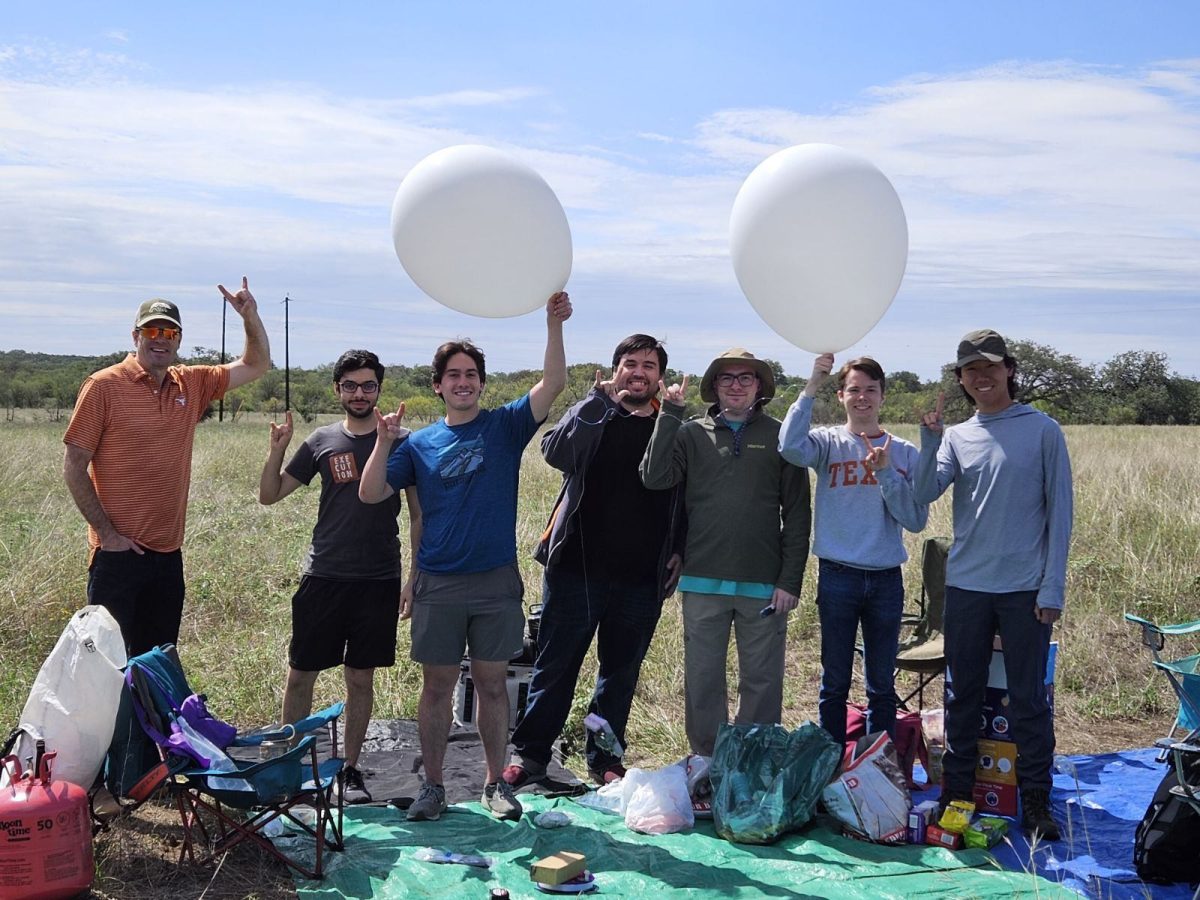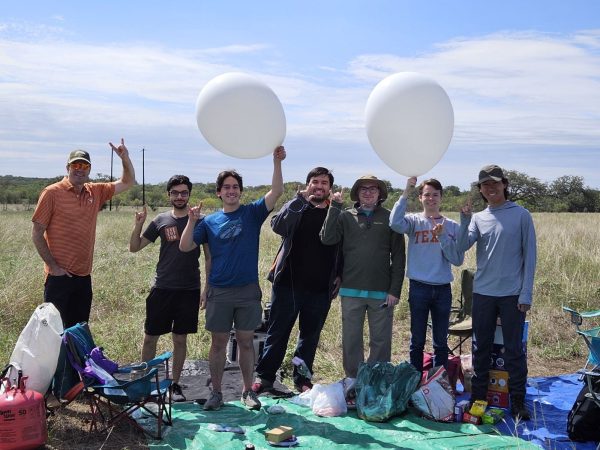While most students will don solar eclipse glasses and enjoy an afternoon of no classes on Monday, six aerospace engineering seniors will see a year-long project take flight.
With the guidance of Cockrell School of Engineering faculty member Adam Nokes, students Arshan Saniei-Sani, Aytahn Benavi, Samuel Mack, Jonathan Williams, Matthew Nattier and Jason Deng spent their senior design capstone class designing and implementing a custom payload system, which attaches to a high-altitude balloon and relays back atmospheric data, for the Texas Eclipse Ballooning Project.
As a part of the larger National Eclipse Ballooning Project, the students’ project aims to observe changes in atmospheric conditions during total solar eclipses by collecting data on wind-field patterns, humidity, temperature, pressure and more. This data will be constantly transmitted from the payload to the team through radio signals during the flight, Saniei-Sani said.
In October, the team conducted a tethered flight of the project during the 2023 annular solar eclipse using smaller balloons and more basic technology, Deng said. They adjusted the design for Monday’s flight based on data gathered from the October flight, he said, including adding a high-altitude balloon and improvements to the camera, batteries and processing system.
On the day of the eclipse, the team will start the day early at their launch site outside of Waco, Texas, and begin setting up the payload and filling the 1,500-gram balloon with helium, Deng said. Once the balloon is released, it will rise over 100,000 feet above the earth’s surface into the stratosphere to collect data along the path of totality.
The team expects the balloon to be able to easily hold a person once inflated on the ground, Benavi said, and expand to around the size of a school bus before it bursts. He said the balloon’s flight should take a total of two to three hours.
“We’ll be trying to chase it along eclipse traffic to figure out where it ends up landing and try to make sure we end up getting it back,” Deng said. “There’s a pretty decent chance that we don’t end up getting it back, but we’re trying our best to make sure that we have the ways to do it properly and safely and be able to get the best data we can on the way back.”
With the data collected from the launch, the team hopes to help the national project in their larger goal of detecting gravity waves in the atmosphere, Nattier said.
“In the same way that when you throw a rock into a still pond, it makes ripple waves outwards, a lot of scientists think that during the eclipse, something similar happens with the air,” Nattier said. “That’s what we’re trying to detect with this weather balloon.”
As the students’ hard work culminates in Monday’s launch, Nokes said he appreciates the students’ dedication to the project and hopes they enjoy the final result.
“(I’m) really proud of the team for sticking through what’s been a tricky project and also a once-in-a-lifetime opportunity to have a capstone where you have a dry run at an eclipse with the annular eclipse and then your kind of final exam with the total eclipse,” Nokes said. “That’s never going to happen again, so here we go.”
















